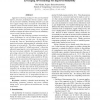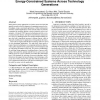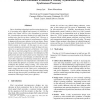38 search results - page 7 / 8 » Shrinking Reductions in SML.NET |
ICCAD
2005
IEEE
15 years 6 months ago
2005
IEEE
As technology scales, the shrinking wire width increases the interconnect resistivity, while the decreasing interconnect spacing significantly increases the coupling capacitance. ...
MICRO
2007
IEEE
15 years 4 months ago
2007
IEEE
Aggressive technology scaling over the years has helped improve processor performance but has caused a reduction in processor reliability. Shrinking transistor sizes and lower sup...
CASES
2006
ACM
15 years 3 months ago
2006
ACM
Rising interest in the applications of wireless sensor networks has spurred research in the development of computing systems for lowthroughput, energy-constrained applications. Un...
ISLPED
2005
ACM
15 years 3 months ago
2005
ACM
As transistors keep shrinking and on-chip data caches keep growing, static power dissipation due to leakage of caches takes an increasing fraction of total power in processors. Se...
ISCA
2002
IEEE
15 years 2 months ago
2002
IEEE
Due to shrinking technologies and increasing design sizes, it is becoming more difficult and expensive to distribute a global clock signal with low skew throughout a processor di...



